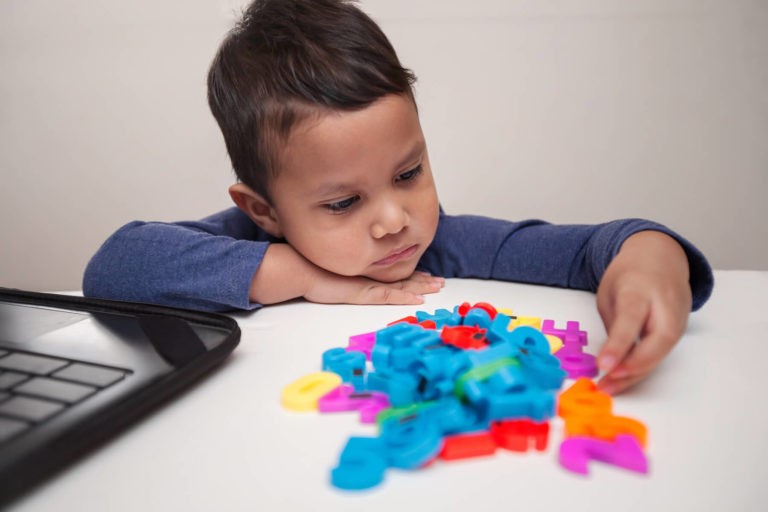There are many different Learning Disorders that can impact students and their learning journey. Some are not as prevalent as others, however, they do still occur and educators should be aware of these disorders, how they present, and how they impact various age groups.
Types of Uncommon Learning Disorders and How They Present
Auditory Processing Disorders – Auditory processing disorders are more common than some of the other disorders on this list, however, they are still not considered extremely common and many teachers and educators are unaware of these types of disorders. Auditory processing disorder means that a child has a hard time understanding sounds. The child may hear the sound correctly, but may not understand how to use it in conversation or in words. These students are also often easily distracted by noise.
Aphasia – Aphasia is a rare condition that impacts a students’ ability to use and comprehend words. Students with this disorder often have trouble remembering names of items or people and have difficulty speaking fluently and expressing themselves.
Dysgraphia – Students with Dysgraphia have difficulty with handwriting. This may include difficulty producing legible writing, griping writing utensils, or producing appropriate sized letters when writing. Oftentimes assisted devices such as laptops or computers help students with Dysgraphia.
Sensory Processing Disorder – Sensory Processing Disorder is a disorder that impacts students’ ability to process information from one of the five senses. It is a neurological disorder and impacts how the individual perceives things. Often students that struggle with this disorder have trouble with being attentive and organizing their thoughts and information presented to them in class. Some behaviors resulting from this disorder include; being sensitive to touch, light, temperature, or eye contact.
Dyslexia – Dyslexia is a language processing disorder that affects how students read, write and comprehend. Students who have Dyslexia often have trouble decoding words, sounds, and sometimes struggle with number sense.
Nonverbal Learning Disabilities – Nonverbal Learning Disabilities relate to how students communicate. Students with these disabilities often have trouble speaking and picking up on social cues. Students may also have difficulty understanding facial expressions of others and body language.
How These Disorders Impact Students
All of these uncommon disabilities noted above impact how students receive information, process information, and apply information. Needs of students with learning disabilities are different from student to student, however, all students need support.
Unfortunately, some students with these disabilities may appear lazy or become stereotyped as behavior problems. The reality is, they are struggling with learning and need support. These students need to be encouraged and met where they are. A lack of positive feedback may result in students losing motivation and losing the desire to participate in school.
For students in all grade levels, it is important for educators to use data to drive instruction and to provide students with remedial instruction. Remediation will help students build on what they do know and develop skills that they need to work on. Oftentimes students with disabilities will have an IEP (Individualized Education Plan). This plan must be followed by educators and amended as needed in order to meet student needs. Educators in early grades, Kindergarten through 2nd grade, will need to work hard to keep their eyes open to students who may have learning disabilities that have not yet been identified. If such a learning disability is suspected, the student should be provided the appropriate response to intervention strategies and possibly be tested for learning disabilities. Educators should follow district expectations and procedures when they suspect a disability.
No matter the age of students, individuals with learning disabilities deserve an appropriate education and support. It is important to be aware of disabilities that are less common than prevalent disabilities. Being aware of these disabilities allows educators to advocate for students and provide students with the education they need.
Resources of Helping Students with Disabilities
According to Respectabilty.org, at the national level only 65 percent of students with disabilities graduate high school each year compared to 86 percent of students without disabilities. This indicates a 21-point gap in graduation rates. Additionally, only 7 percent of students with disabilities graduate college. Considering this, it is key that educators support students with disabilities as best they can. Respectability.org has a list of resources that educators can access to help increase their capacity for educating students with disabilities. Additionally, Digital Promise is an online resource that provides links and brief descriptions of tools that can be beneficial to students with disabilities. Some of these include BrainPop, Choiceworks, and Touch Math.
Human resources are also a key piece of instructing students with disabilities. EC teachers and specialists within the school and district will help guide teachers in providing instruction to students with disabilities and making sure that student goals and needs are met. Sharing information with parents on how they can help is also important. Creating a partnership with parents of students with disabilities is always beneficial to students.
Being aware of both common and uncommon disabilities is important for all educators. Exploring the resources above is a good first step in learning about disabilities that many students face. Information on learning disabilities is ever changing and educators should continue to keep abreast of new information.




